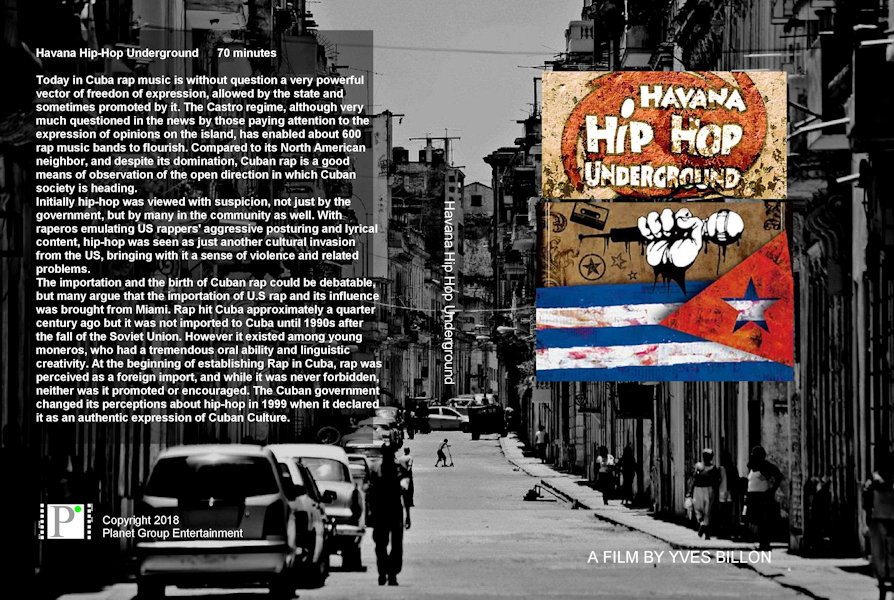Havana Hip Hop Underground
 Wednesday, January 8, 2014 at 03:34PM
Wednesday, January 8, 2014 at 03:34PM 
Today in Cuba rap music is, without question, a very powerful vector of freedom of expression, allowed by the state and now promoted by it. The Castro regime, although very much questioned in the news by those paying attention to the expression of opinions on the island, has enabled about 600 rap music bands to flourish. This is their story.
Compared to its North American neighbors, and despite their domination, Cuban rap is a good means of observation of the open direction in which Cuban society is heading.
VIEW SHORT INTRO CLIP BELOW:
Initially hip-hop was viewed with suspicion, not just by the government, but by many in the community as well. With raperos emulating US rappers' aggressive posturing and lyrical content, hip-hop was seen as just another cultural invasion from the US, bringing with it a sense of violence and related problems. That's changed.
The importation and the birth of Cuban rap could be debatable, but many argue that the importation of U.S rap and its influence was brought from Miami. Rap hit Cuba approximately a quarter century ago but it was not imported to Cuba until 1990s after the fall of the Soviet Union. However it existed among young moneros, who had a tremendous oral ability and linguistic creativity. At the beginning of establishing Rap in Cuba, rap was perceived as a foreign import, and while it was never forbidden, neither was it promoted or encouraged. The Cuban government changed its perceptions about hip-hop in 1999 when it declared it as an authentic expression of Cuban Culture.
 Link to Video Librarian Review of Havana Hip Hop Underground
Link to Video Librarian Review of Havana Hip Hop Underground
In addition the government has formed the Agencia Cubana de Rap (The Cuban Rap Agency) that provides state-run record label and hip-hop magazine, and began supporting the annual Cuban Hip Hop festival. Cuban rappers injected a renovating energy into Cuban music that was taken from hip hop culture. Rap in Cuba began to emerge precisely during the gangsta rap period in the United States which included artists like 2Pac, Notorious B.I.G, Ice-T, Snoop Dogg and many influential gangster rappers.
Standard Purchase Options Havana Hip Hop Underground DVD Length: 72 minutes.
![]()
Streaming available via KANOPY
For DVD and other Standard Options if your system is not PayPal or Credit Card Friendly, we will accept your purchase order and/or send you an invoice payable by check or credit card. For details on purchase orders, please contact: nagle.patrick@gmail.com
A Note About Our Academic and Institutional Pricing
Educational DVD with PPR: $150
Anytime you want to screen a film on campus, Public Performance Rights (PPR) needs to be obtained. Copyright law (USC 17§101) defines a public performance as occurring in a public space or if it is in any place if "a substantial number of persons outside of a normal circle of a family and its acquaintances" is gathered there. This would include classrooms, meeting rooms, auditoriums, dorm lounges, etc. However, copyright law (USC 17§110) also provides an exception for face-to-face teaching activities in a nonprofit educational institution.
Digital Site License with PPR: $200
A DSL grants educational institutions and/or non-profit organizations a LIFE OF FILE license to host and stream a film online to students, faculty and staff on their password-protected server. This license is granted for three years. The key advantage of purchasing a DSL is that once uploaded, an unlimited number of viewers can access the film from multiple locations simultaneously.
DVD + DSL bundle PPR: $225
K-12, Non-profit, Public Library with PPR: $62.50
Personal DVD or File Download: $24.50
